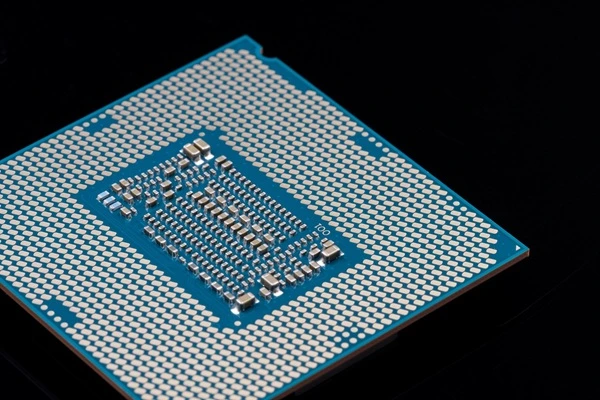Overview
I am often asked by clients that are looking to purchase a new computer to explain the
different processors. This is intended to be a straight forward explanation intended for
the average consumer and won't go into a bunch of technical details. The primary goal is
to understand the basics so you can make an informed decision.
Intel and AMD are the 2 major manufacturers of processors. Both of them have a numbering
scheme. You will see things like Ryzen 3, Ryzen 5 Ryzen 7 and Ryzen 9. or Intel Core I3,
I5, I7 and I9. This denotes the processing power as well as the price level. The higher
the number, the faster the processor and the more expensive it becomes. SPEED
COSTS MONEY.
I have found that using car analogy's work well for explaining certain computer topics.
In this case, the processors can be likened to car engines. The bigger you go, the more
power you'll have.
Badges
As you shop for a computer in a store or online, you’ll likely notice the stickers (badges) on most machines. These are to inform the consumer as to what's inside the computer. Unfortunately, many consumers only look at the price and end up buying a smaller processor that doesnt meet their needs. Its important to work with the salesperson so you get a system thats powerful enough to do what you want without overspending.
The processor badges shown below are provided as examples. The appearance of the badges change with each generation of processors for marketing purposes.
Core i3 or Ryzen 3 - GOOD


Comparable to a 4 cylinder car - A budget processor that's only intended for basic tasks such as web browsing, word processing and paying bills online. They are not intended for games other than simple things like solitaire.
Note: Ryzen 3 has been discontinued.
________________________________________
Core i5 or Ryzen 5 - BETTER


Comparable to a 6 cylinder car - This is the most common (mainstream/mid-range) processor.
Note: This is the group most of my clients pick.
________________________________________
Core i7 or Ryzen 7 - GREAT


Comparable to a 8 cylinder car - Used for higher end tasks and gaming.
Note: This is the group I pick from for my personal use.
________________________________________
Core i9 or Ryzen 9 - THE BEST


Comparable to a 10 cylinder supercar - Intended for power users, engineering, graphic design and hard core gaming.
Note: Bring your wallet!
________________________________________
Within each of these 4 levels, there will be several dozen choices, each with an additional number. Normally, the higher the number, the faster the processor.
MOST COMPUTERS WE SELL ARE IN THE 5 OR 7 SERIES.
Can I go Lower?
Yes. Lower end processors do exist but I would NEVER recommend the Celeron,
Atom, and Pentium processors. These may be found in low-end Walmart
compters and many Chromebooks. They are simply too underpowered to provide a
good user experience. Unfortunately they are frequently purchased by uninformed
buyers. It's not worth the little bit of savings when you buy one. If you do
somehow end up with one, you'll be looking to upgrade much sooner which ends up
costing you more in the long run.
Can I go Higher?
Yes. High end processors above Core i9 and Ryzen 9 also exist. These are typically used
in very expensive workstations and servers. These would include the Intel Xeon (server)
line and AMD Threadripper (workstation) and Epyc (server) lines. These are very
expensive and not typically used for a home computer. They are beyond the scope of this
article.
Processor Generations - Important!
The second major consideration is the GENERATION of the processor.
Approximately each year Intel will release a new line of processors that are faster than
the previous generation. The prices are lowered on the last generation while the
current generation is some percentage higher.
In the case of Intel, you want to pay close attention to the model number. The
first 1 or 2 digits denotes the generation. Here are some examples:
- 6000 series is Gen 6
- 7000 series is Gen 7
- 8000 series is Gen 8 (This is the oldest Intel Generation that works with Windows 11)
- 9000 series is Gen 9
- 10000 series is Gen 10
- 11000 series is Gen 11
- 12000 series is Gen 12
- 13000 series is Gen 13 (This generation has overheating issues}
- 14000 series is Gen 14 (This generation has overheating issues}
- Instead of going to Gen 15, Intel has decided to switch to a new numbering scheme called Core Ultra. These processors reportedly don't provide much improvement over Gen 14 and are intended more for AI.
The Steps Go Up!
Follow the pattern and you'll quickly see that each generation is simply a 1
step above the prior generation.
A i9 Gen 8 is roughly equivalant to a i7 Gen 9.
A i7 Gen 8 is roughly equivalant to a i5 Gen 9.
A i5 Gen 8 is roughly equivalant to a i3 Gen 9.
A i9 Gen 9 is roughly equivalant to a i7 Gen 10.
A i7 Gen 9 is roughly equivalant to a i5 Gen 10.
A i5 Gen 9 is roughly equivalant to a i3 Gen 10.
A i9 Gen 10 is roughly equivalant to a i7 Gen 11.
A i7 Gen 10 is roughly equivalant to a i5 Gen 11.
A i5 Gen 10 is roughly equivalant to a i3 Gen 11.
And so on...
Keep in mind that the core counts change when comparing processors. Some
applications and games only use a single core while other may fully utilize
multiple cores.

 Royalty Free Pixabay Image
Royalty Free Pixabay Image
